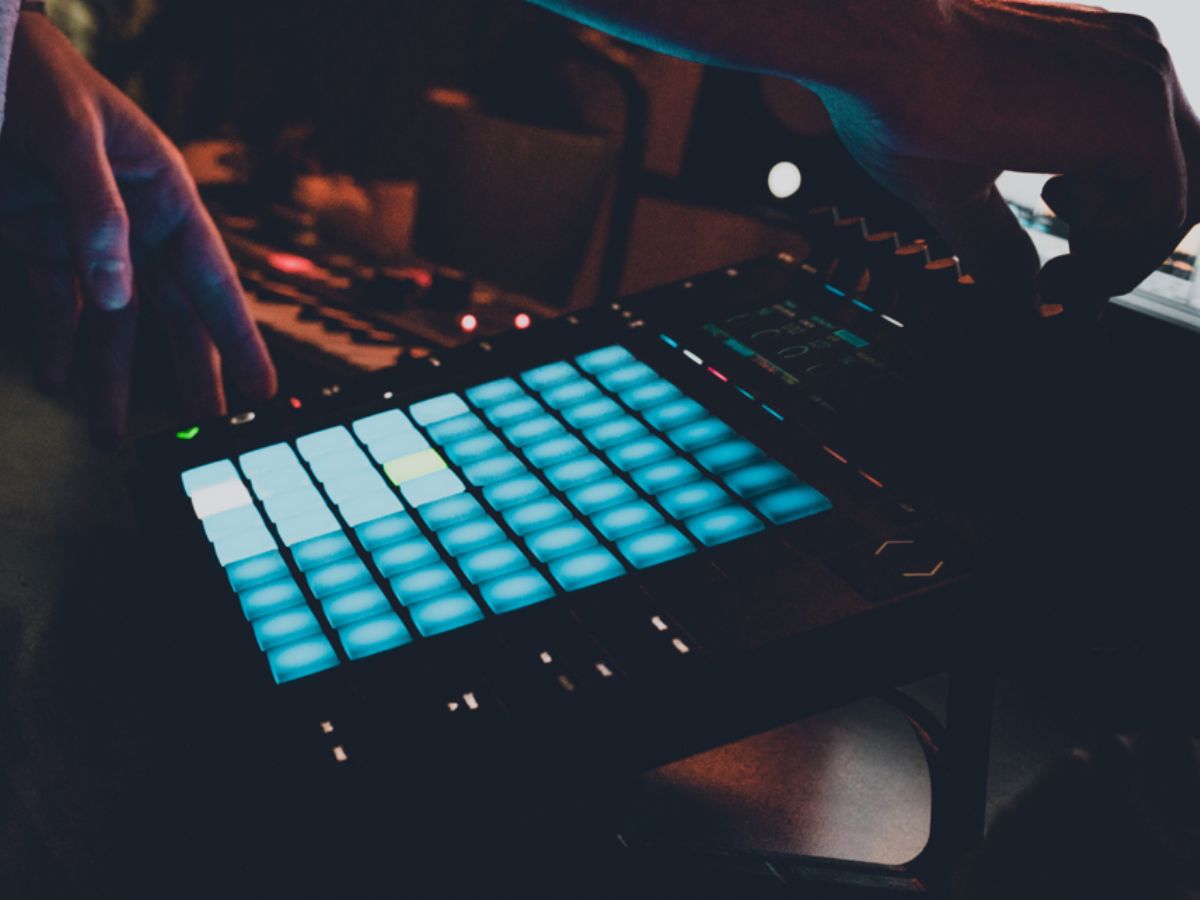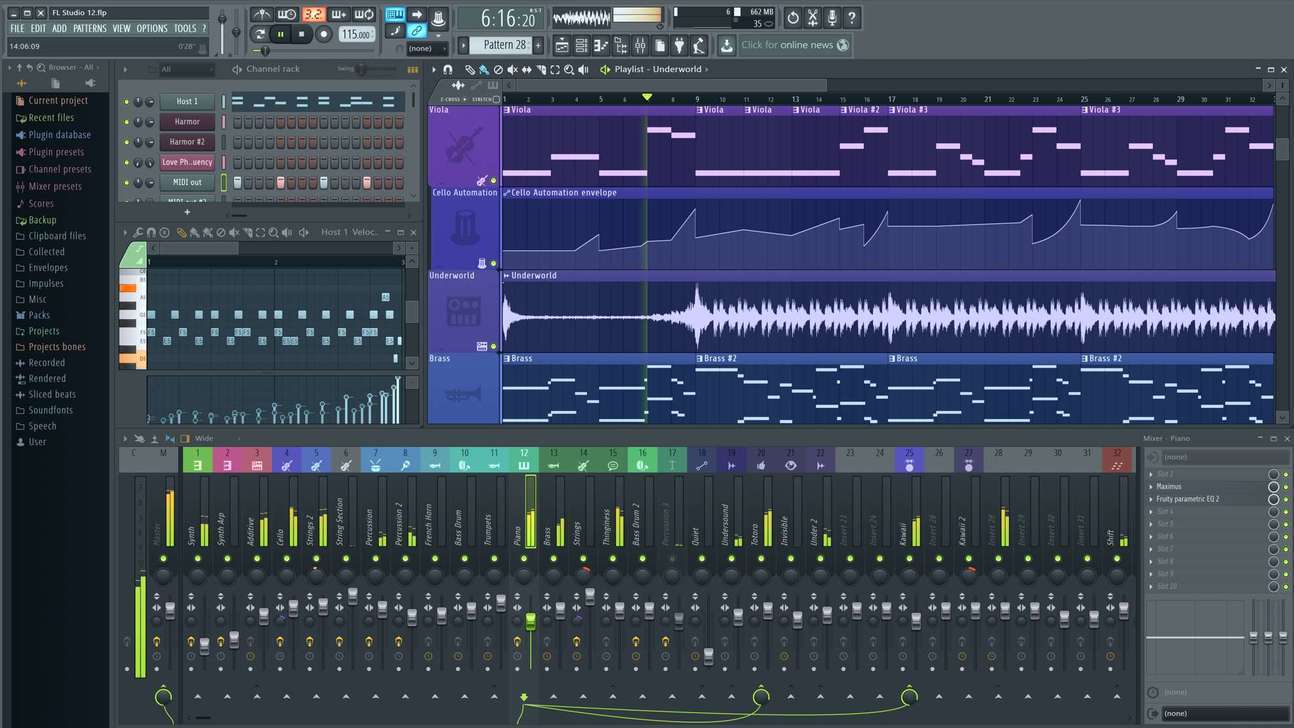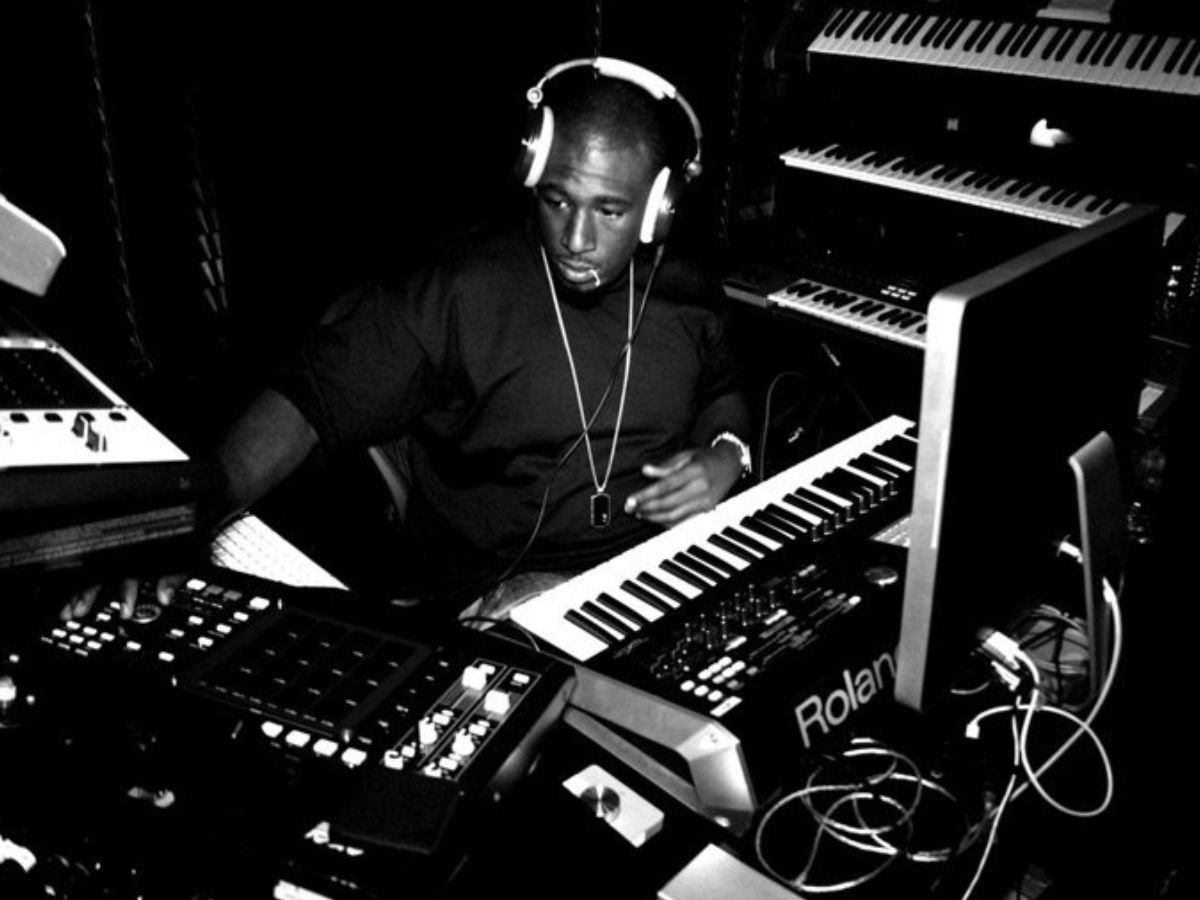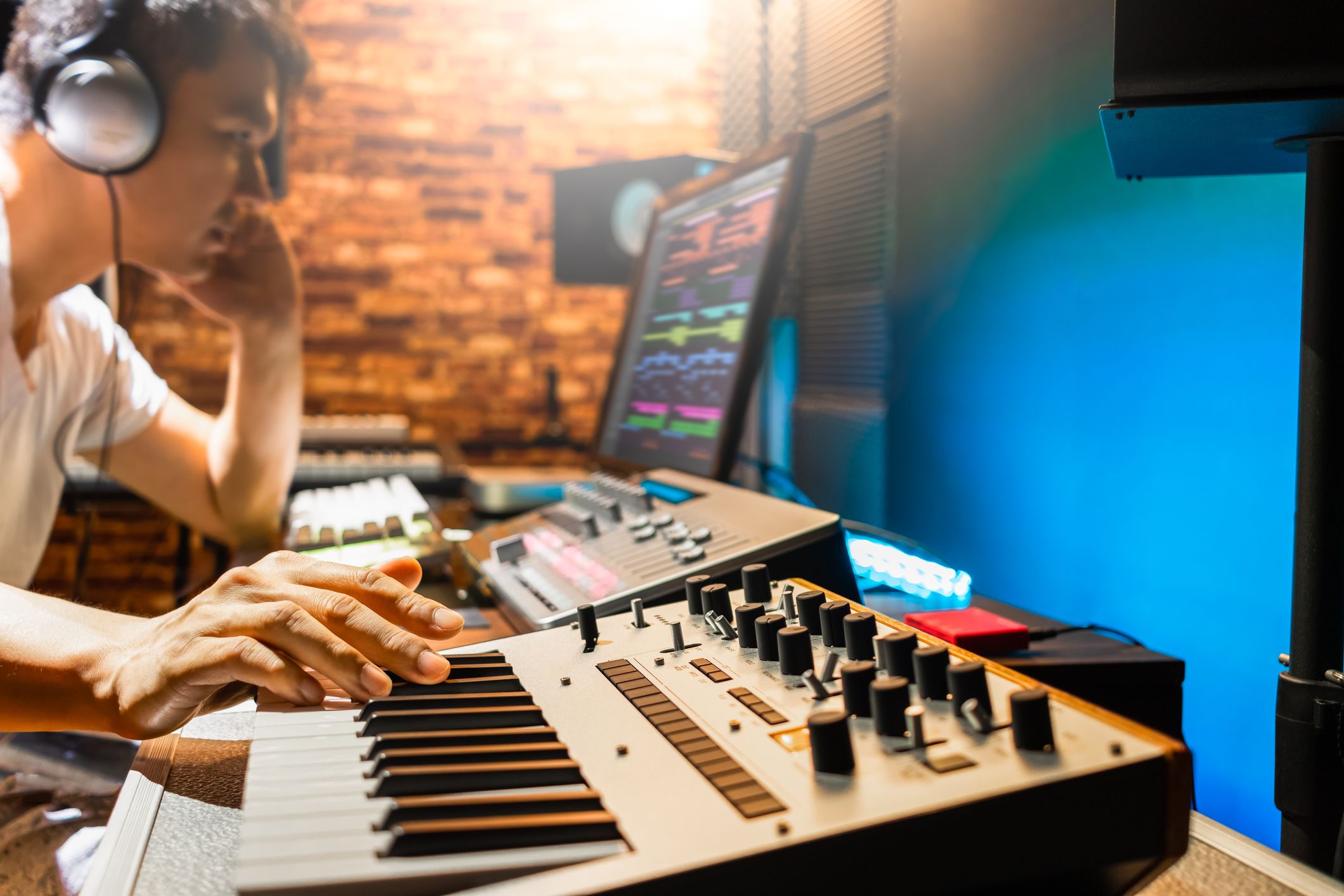

Hip Hop
How To Make Lofi Hip-Hop
Modified: February 19, 2024
Learn how to make lofi hip-hop beats with our step-by-step guide. Discover the art of hip hop production and create music with a laid-back vibe.
(Many of the links in this article redirect to a specific reviewed product. Your purchase of these products through affiliate links helps to generate commission for AudioLover.com, at no extra cost. Learn more)
Table of Contents
Introduction
Hip-hop has been a dominant force in the music industry for decades, constantly evolving and pushing boundaries. One of the subgenres that has gained significant popularity in recent years is lofi hip-hop. Lofi hip-hop is characterized by its laid-back, mellow vibes and nostalgic soundscapes, often incorporating samples from old records and vinyl crackles.
With its soothing melodies and hypnotic beats, lofi hip-hop has captured the hearts of music lovers around the world. In this article, we will delve into the world of lofi hip-hop and explore how you can create your very own lofi hip-hop tracks.
Whether you’re a seasoned producer or just starting out, this guide will provide you with the knowledge and tools you need to craft authentic and captivating lofi hip-hop music. We will cover everything from understanding the genre and gathering the necessary equipment and software, to finding the perfect samples, creating drum beats, manipulating sounds, incorporating melodic elements, and finally, mixing and mastering your tracks.
So, if you’re ready to dive into the world of lofi hip-hop and unleash your creativity, let’s get started!
Understanding Lofi Hip-Hop
Lofi hip-hop, also known as “chillhop” or “lo-fi beats,” emerged in the late 2010s and has since gained immense popularity on platforms like YouTube and Spotify. What sets lofi hip-hop apart from other genres is its distinct sound that combines the nostalgic feel of vintage records with smooth, laid-back beats.
The defining element of lofi hip-hop is the use of samples, particularly from old jazz, soul, and funk records. These samples are often chopped and manipulated to create a unique and atmospheric sound. Lofi hip-hop also incorporates other elements like vinyl crackles, simulated tape hiss, and low-fi effects to add warmth and character to the music.
Another characteristic of lofi hip-hop is its relaxed tempo, typically ranging from 70 to 90 beats per minute (BPM). This slow-paced tempo allows the listener to immerse themselves in the music and experience a sense of calm and tranquility.
Lofi hip-hop is often associated with its connection to visual aesthetics. Many lofi hip-hop tracks are accompanied by looped footage of anime, old movies, or urban landscapes, creating a cozy and nostalgic atmosphere that complements the music. This combination of visuals and music has contributed to the rise of the “lofi hip-hop radio” trend, where listeners tune into live-streams playing continuous lofi hip-hop tracks.
The genre’s popularity can be attributed to its ability to serve as a sonic backdrop for various activities, such as studying, relaxing, or just enjoying a laid-back ambiance. The soothing melodies and repetitive nature of lofi hip-hop create an immersive, almost therapeutic experience for listeners.
Overall, understanding the essence of lofi hip-hop is crucial in creating authentic tracks. It’s about capturing the rawness and imperfections of vintage records, infusing them with modern production techniques, and creating a sonic landscape that transports listeners to a peaceful and nostalgic state of mind.
Equipment and Software Needed
To create your own lofi hip-hop tracks, you’ll need a few essential pieces of equipment and software. While the specific tools may vary depending on your preferences and budget, here are the fundamental elements you’ll need:
1. Computer: A reliable computer or laptop is essential for producing music. Ensure that your system meets the requirements for running digital audio workstations (DAWs) and plugins smoothly.
2. Digital Audio Workstation (DAW): A DAW is software that allows you to record, edit, and arrange music. Popular DAWs for producing lofi hip-hop include Ableton Live, FL Studio, Logic Pro, and Reaper. Choose a DAW that you feel comfortable working with and that suits your workflow.
3. MIDI Controller: While not strictly necessary, a MIDI controller can greatly enhance your production process. It allows you to play virtual instruments and control parameters within your DAW using physical keys, pads, and knobs. Popular MIDI controllers include the Akai MPK Mini and the Novation Launchkey series.
4. Audio Interface: An audio interface is necessary if you plan on recording external audio sources such as microphones or instruments. It converts analog signals into digital audio that your computer can process. Focusrite Scarlett, PreSonus AudioBox, and Universal Audio Apollo are popular audio interfaces.
5. Headphones: A good pair of studio headphones is important for monitoring and fine-tuning your mix. Look for headphones that provide a balanced and accurate sound representation, such as the Audio-Technica ATH-M50x or the Beyerdynamic DT 770 Pro.
6. Samples and Sample Packs: As mentioned earlier, samples are a crucial component of lofi hip-hop. Collecting vinyl records and sampling them yourself can be a rewarding process, but you can also find a wide variety of pre-made sample packs and royalty-free sample libraries online. Some popular options include Splice, Cymatics, and Loopmasters.
7. Plugins and Effects: To shape and manipulate your sounds, you’ll need a selection of plugins and effects. Common ones used in lofi hip-hop production include EQ, compression, reverb, delay, and tape emulation plugins. There are both free and paid options available. Some notable plugins for lofi sound design are Izotope Vinyl, RC-20 Retro Color, and Valhalla VintageVerb.
Remember, while having high-quality equipment can enhance your production process, it’s the creativity and skill behind the tools that truly make a difference. Don’t feel discouraged if you have limited resources – focus on honing your skills and mastering the software you have at your disposal.
Finding the Right Samples
When it comes to creating authentic and captivating lofi hip-hop tracks, finding the right samples is of utmost importance. Here are some tips to help you in your quest for the perfect lofi hip-hop samples:
1. Explore Vinyl Record Collections: One of the hallmarks of lofi hip-hop is the use of samples from vinyl records. Visit local record stores, thrift shops, or online marketplaces to dig for hidden gems. Look for records from genres like jazz, soul, funk, and R&B, as they often contain rich and textured sounds that work well in lofi hip-hop.
2. Sample Libraries: If you don’t have access to a vast vinyl collection, sample libraries can be a great resource. Many websites offer pre-recorded samples specifically crafted for lofi hip-hop production. Make sure to choose sample packs that match your desired vibe and style.
3. YouTube & Streaming Platforms: YouTube has become a treasure trove for lofi hip-hop enthusiasts. Numerous channels and playlists feature lofi hip-hop tracks along with sampled songs, making it a great source of inspiration and potential samples. Additionally, streaming platforms like Spotify and SoundCloud also offer curated playlists that showcase a wide range of lofi hip-hop tracks for you to discover new samples.
4. Create Your Own Sample Library: Don’t be afraid to experiment and create your own samples. Try recording sounds from your environment – whether it’s the sound of rain, footsteps, or even mundane objects – and manipulate them to fit the lofi aesthetic. This can give your tracks an original and unique touch.
5. Sample Chopping: Once you have your samples, it’s time to chop and manipulate them. Use your DAW’s editing tools or dedicated sample chopping plugins to cut the samples into smaller sections. Experiment with different chops, rearrange them, and add your own creative flair to create something unique.
Remember to always respect copyright laws and ensure that you have the necessary permissions or licenses when using samples in your music. Many sample libraries provide royalty-free samples, while others may require proper crediting or purchasing of usage rights.
Finding the right samples may require some time and effort, but it’s a crucial step in creating authentic and captivating lofi hip-hop tracks. So, keep exploring, experimenting, and refining your sample collection to infuse your music with the nostalgic charm that defines the genre.
Creating a Lofi Hip-Hop Drum Beat
The drum beat is the backbone of any lofi hip-hop track, setting the groove and establishing the laid-back vibe. Here are some steps to help you create a captivating lofi hip-hop drum beat:
1. Selecting the Right Drum Samples: Start by choosing drum samples that have a warm and vintage sound. Look for samples that emulate the sound of classic drum machines like the Roland TR-808 or the SP-1200. You can find suitable drum samples in lofi hip-hop sample packs or by browsing through online drum sample libraries.
2. Layering and Arranging the Drum Sounds: Layering different drum sounds can add depth and richness to your drum beat. Start with a kick drum to provide a solid foundation, then add snare drums, hi-hats, and other percussion elements. Experiment with different combinations and placements to create a unique pattern that fits the lofi hip-hop groove.
3. Applying Swing and Humanization: Lofi hip-hop beats often have a relaxed and slightly offbeat feel. Use swing or quantization settings in your DAW to introduce a subtle groove to your drum beat. You can also manually adjust the timing of individual drum hits to create a humanized and imperfect rhythm.
4. Adding Vinyl Crackle and Noise: To enhance the vintage and lofi aesthetic, consider adding vinyl crackle and noise to your drum beat. You can find pre-recorded vinyl crackle samples or use plugins that simulate the sound of vinyl distortion and tape saturation. Layer these subtle sounds underneath your drum elements to add warmth and character.
5. Incorporating Drum Breaks: Drum breaks are short snippets from old records that can add a nostalgic vibe and dynamic variation to your drum beat. Dig through your sample collection or use drum break sample packs to find unique breaks that complement your track. Integrate them strategically within your drum beat to create interest and surprise.
6. Experimenting with Effects: Apply various effects to your drum elements to further shape the sound. Consider using EQ to emphasize certain frequencies or create a lofi tone, compression to add punch and control, or reverb and delay to create space and depth. Be mindful not to overdo the effects and maintain a balanced mix.
Remember, finding your unique style and experimenting with different drum patterns is key to creating engaging lofi hip-hop beats. Listen to your favorite lofi hip-hop tracks, analyze their drum beats, and draw inspiration from them while adding your personal touch. Keep practicing and refining your skills to develop a signature sound that sets your tracks apart.
Processing and Manipulating Sounds
Processing and manipulating sounds is a critical aspect of creating captivating lofi hip-hop tracks. By applying various techniques and effects, you can shape your sounds to fit the lofi aesthetic and add depth and character to your music. Here are some key steps to process and manipulate sounds for your lofi hip-hop production:
1. Equalization (EQ): Use EQ to sculpt the frequency response of individual sounds. Cut or attenuate frequencies that are unnecessary or clash with other elements in the mix. Boosting certain frequencies can also add warmth or emphasize particular characteristics of the sound. Experiment with subtle EQ adjustments to achieve a balanced and pleasing tonal balance.
2. Compression: Apply compression to control dynamics and add consistency to your sounds. A gentle compression can help even out the levels of individual elements, making them sit well within the mix. Consider using vintage-style compressors or opt for plugins with a smooth and transparent sound to retain the overall intimacy of your lofi hip-hop production.
3. Tape Saturation and Analog Emulation: To add warmth and vintage character to your sounds, consider using tape saturation plugins or analog emulation plugins. These tools can simulate the sonic characteristics of tape machines, analog consoles, and vintage gear. Use them subtly to give your tracks a nostalgic and lofi quality.
4. Lo-fi Effects: Experiment with lo-fi effects to achieve the distinctive lofi hip-hop sound. Effects like vinyl emulators, bit-crushers, and sample rate reducers can add grit, distortion, and vintage artifacts to your sounds. However, use these effects sparingly to avoid overwhelming your mix and maintain a balanced sonic environment.
5. Layering and Texturing: Layering sounds can add depth and complexity to your tracks. Experiment with blending different instruments, samples, or textures to create unique and interesting sonic combinations. This technique can help create a lush and atmospheric backdrop for your lofi hip-hop production.
6. Sampling and Manipulating: Take advantage of the sampling nature of lofi hip-hop and manipulate your sounds creatively. Chop, reverse, pitch-shift, or time-stretch samples to create unique variations. Use effects like reverb, delay, and modulation to further transform and shape your sounds. This experimentation can bring new and exciting dimensions to your tracks.
Remember to trust your ears and let your creativity guide you. There are no strict rules in lofi hip-hop production, so don’t be afraid to take risks and explore unconventional techniques. As you continue to refine your processing and manipulating skills, you’ll develop your own signature sound that breathes life into your lofi hip-hop tracks.
Adding Atmospheric Layers
One of the key elements that contribute to the immersive and enchanting nature of lofi hip-hop is the addition of atmospheric layers. These layers create a captivating ambiance and transport listeners to a nostalgic and dreamy sonic landscape. Here are some techniques for adding atmospheric layers to your lofi hip-hop tracks:
1. Ambient Textures: Incorporate ambient textures to create a lush and ethereal backdrop. These can be long, sustained pads or evolving soundscapes that fill the sonic space. Experiment with synthesizers, samplers, or even field recordings to create textures that add depth and atmosphere to your tracks.
2. Reverb and Delay: Utilize reverb and delay to create space and depth within your mix. Apply subtle amounts of both effects to your atmospheric layers to make them appear distant and immersive. Experiment with different settings and presets to find the right balance and create the desired sonic environment.
3. Field Recordings: Incorporate field recordings to add organic and real-world elements to your tracks. This could be the sound of rain, cityscapes, nature, or even snippets of chatter. These recordings can bring a sense of familiarity and nostalgia to your music, adding an extra layer of texture and mood.
4. Vinyl Crackles and Hiss: Enhance the vintage and lofi feel of your tracks by adding vinyl crackles and simulated tape hiss. Layering these subtle sounds underneath your atmospheric layers can create a sense of warmth and nostalgia, transporting the listener back in time to the era of vinyl recordings.
5. Space and Panning: Use spatial effects and panning techniques to create a sense of depth and movement. Experiment with widening certain atmospheric elements to create a enveloping soundscape. Additionally, automate panning to gently move elements around the stereo field to add interest and dimension to your tracks.
6. Lyrical Vocal Samples: Consider incorporating occasional vocal samples into your atmospheric layers. Look for snippets from old movies, spoken word recordings, or even acapella samples that fit the mood and vibe of your track. These samples can add a human touch and evoke emotions within the listener.
When adding atmospheric layers, it’s important to strike a balance between the foreground elements (such as drums and melodies) and the background layers. The atmospheric elements should enhance and complement the main elements without overpowering them. Use your ears as a guide and trust your intuition to create a cohesive and captivating sonic environment that brings your lofi hip-hop tracks to life.
Incorporating Melodic Elements
Adding melodic elements to your lofi hip-hop tracks is a crucial step in creating depth and emotion. Melodies play a significant role in creating memorable hooks and engaging the listener. Here are some tips for incorporating melodic elements into your lofi hip-hop productions:
1. Sampling Melodies: One of the defining characteristics of lofi hip-hop is the use of sampled melodies from old records. Explore your sample library or vinyl collection to find melodic snippets that resonate with the vibe you want to create. Look for soulful, jazzy, or dreamy melodies that can serve as the foundation of your track.
2. Chords and Progressions: Create lush and emotive chords and progressions to establish the harmonic structure of your track. Whether you’re playing them on a keyboard, utilizing chord plugins, or sampling chords from old records, focus on creating progressions that evoke the desired mood and vibe of lofi hip-hop. Experiment with different voicings, inversions, and extensions to add color and depth to your chords.
3. Instrumentation: Consider the instrumentation that best fits your melodic elements. Lofi hip-hop often incorporates instruments like pianos, Rhodes, guitars, and even orchestral instruments in a subtle and intimate way. Introduce these instruments to your productions to enhance the emotional impact of your melodies.
4. Simplicity and Repetition: Lofi hip-hop often thrives on simplicity and repetition. Keep your melodies straightforward and memorable, allowing them to lull the listener into a state of relaxation and contemplation. Repeating melodic motifs or looping melodies can create a soothing and hypnotic effect.
5. Counter Melodies and Harmonic Embellishments: Explore the addition of counter melodies or harmonic embellishments to add interest and intricacy to your melodic elements. These can be subtle layers that weave in and out of the main melody, providing a sense of movement and depth.
6. Effects: Apply effects to your melodic elements to enhance the lofi aesthetic. Experiment with tape emulation plugins, reverb, delay, and modulation effects to give your melodies a vintage, dreamy, or hazy quality. However, ensure that these effects enhance the overall vibe without overwhelming the clarity of the melody.
Remember, capturing the essence of lofi hip-hop melodies is about incorporating soulful and emotive elements that transport the listener to a space of serenity and introspection. Add your personal touch, experiment with different techniques, and let your melodies guide the emotional journey of your lofi hip-hop tracks.
Mixing and Mastering
Mixing and mastering are essential steps in the production process that ensure your lofi hip-hop tracks sound polished, balanced, and ready for release. Here are some key considerations when it comes to mixing and mastering your lofi hip-hop productions:
1. Mixing: Pay attention to the individual elements of your track and their placement within the stereo field. Ensure that each instrument and sound has its own space and doesn’t clash with others. Use panning, EQ, and volume adjustments to create a balanced mix. Keep in mind the lofi aesthetic and avoid over-processing or excessive polishing, as lofi hip-hop embraces imperfection and a raw, intimate sound.
2. EQ and Compression: Use EQ to clean up and enhance the tonal balance of your mix. Cut unnecessary frequencies and make subtle adjustments to highlight or attenuate specific elements. Compression is useful for controlling dynamics and adding cohesion to your mix. Apply gentle compression to individual tracks or bus groups to achieve a more consistent and controlled sound.
3. Spatial Effects: Add depth and dimension to your mix through spatial effects like reverb and delay. Experiment with different types of reverbs to create a sense of space and realism. Use delay to create depth and add movement to specific elements, such as vocals or melodic instruments. Be mindful of the settings to maintain clarity and avoid cluttering the mix.
4. Automation: Use automation to add movement and interest to your mix. Automate volume levels, panning, and effect parameters to create dynamics and emphasize important musical moments. Automation can also be used to shape the transitions between sections and add a sense of progression and development to your lofi hip-hop tracks.
5. Mastering: The mastering stage is the final touch to your track, ensuring consistency and optimizing the overall sound for various playback systems. Apply subtle EQ adjustments, dynamic processing, and stereo enhancement to enhance the tonal balance, loudness, and stereo image. Aim for a cohesive sound that matches the genre’s aesthetic while considering the overall streaming loudness standards to make your track ready for distribution.
6. Reference Tracks: Compare your mix and master to professionally produced lofi hip-hop tracks as reference points. This will help you understand the sonic characteristics and standards of the genre. Analyze the frequency balance, dynamic range, and overall tonality of reference tracks to fine-tune your own mix and master accordingly.
Throughout the mixing and mastering process, always trust your ears and make adjustments based on what sounds good to you. Experiment with different techniques and iterate until you achieve the desired result for your lofi hip-hop tracks. Remember, the goal is to create a mix that complements the genre’s intimate and nostalgic nature while maintaining clarity and balance.
Final Thoughts
Congratulations! You’ve now learned the essentials of crafting your own captivating lofi hip-hop tracks. By understanding the genre, gathering the necessary equipment and software, finding the perfect samples, creating drum beats, processing sounds, incorporating atmospheric layers, adding melodic elements, and mastering your tracks, you’re well on your way to creating immersive and nostalgic lofi hip-hop music.
However, keep in mind that the creative journey doesn’t end here. Lofi hip-hop is a genre that constantly evolves, and it’s important to continue honing your skills, exploring new soundscapes, and staying true to your unique artistic vision. Don’t be afraid to experiment, take risks, and infuse your tracks with your own personal touch.
Remember, producing lofi hip-hop is not just about following a specific formula – it’s about capturing a feeling and creating an experience for the listener. As you progress and develop your own style, make sure to stay true to the essence of lofi hip-hop while expressing your individuality through your music.
Lastly, immerse yourself in the world of lofi hip-hop. Listen to the creations of other artists, study their techniques, and draw inspiration from their work. Collaborate and connect with fellow producers and musicians to learn from each other and grow as a community.
Now, armed with your knowledge and passion for lofi hip-hop, it’s time to embark on your own musical journey. Explore, experiment, and let your creativity flow as you create unique, captivating, and soulful lofi hip-hop tracks that resonate with listeners around the world.











